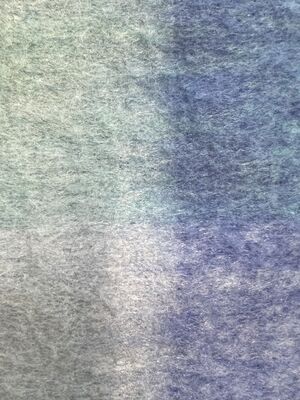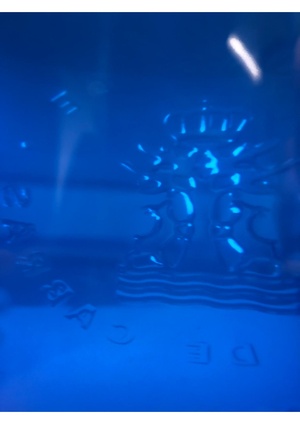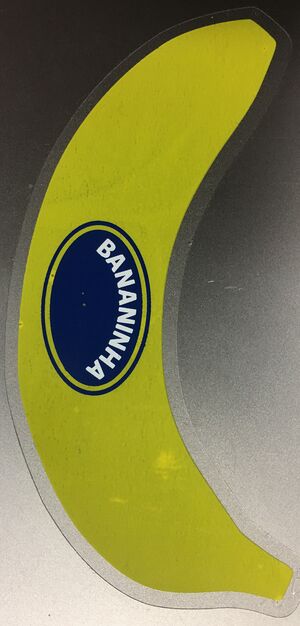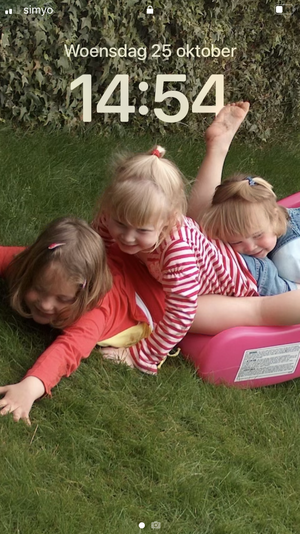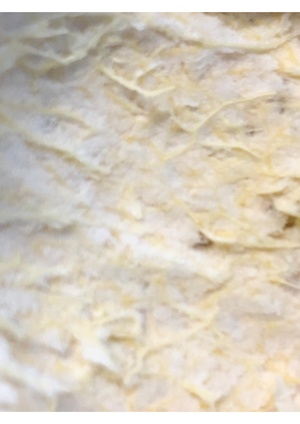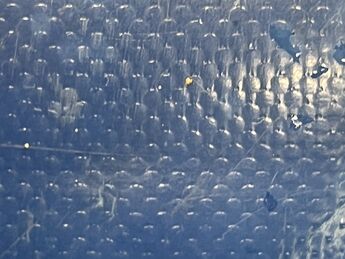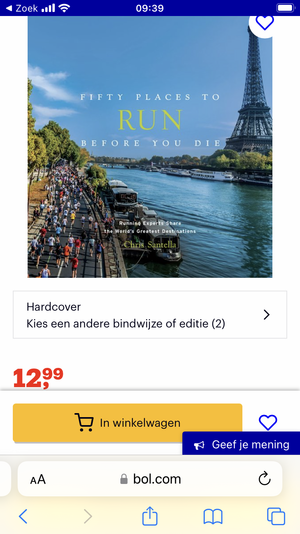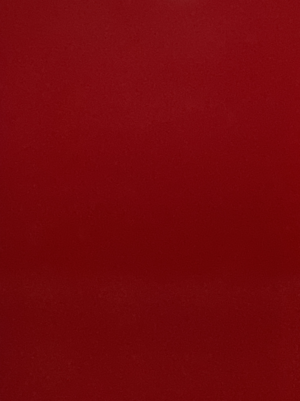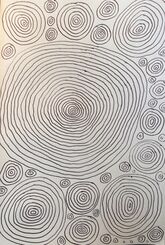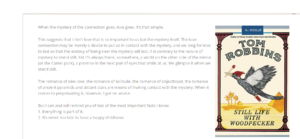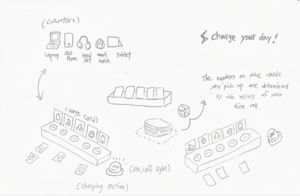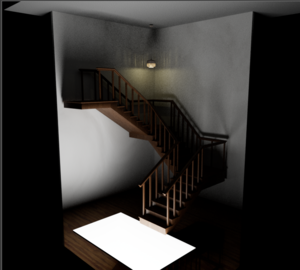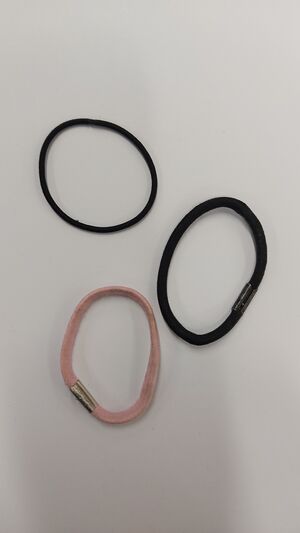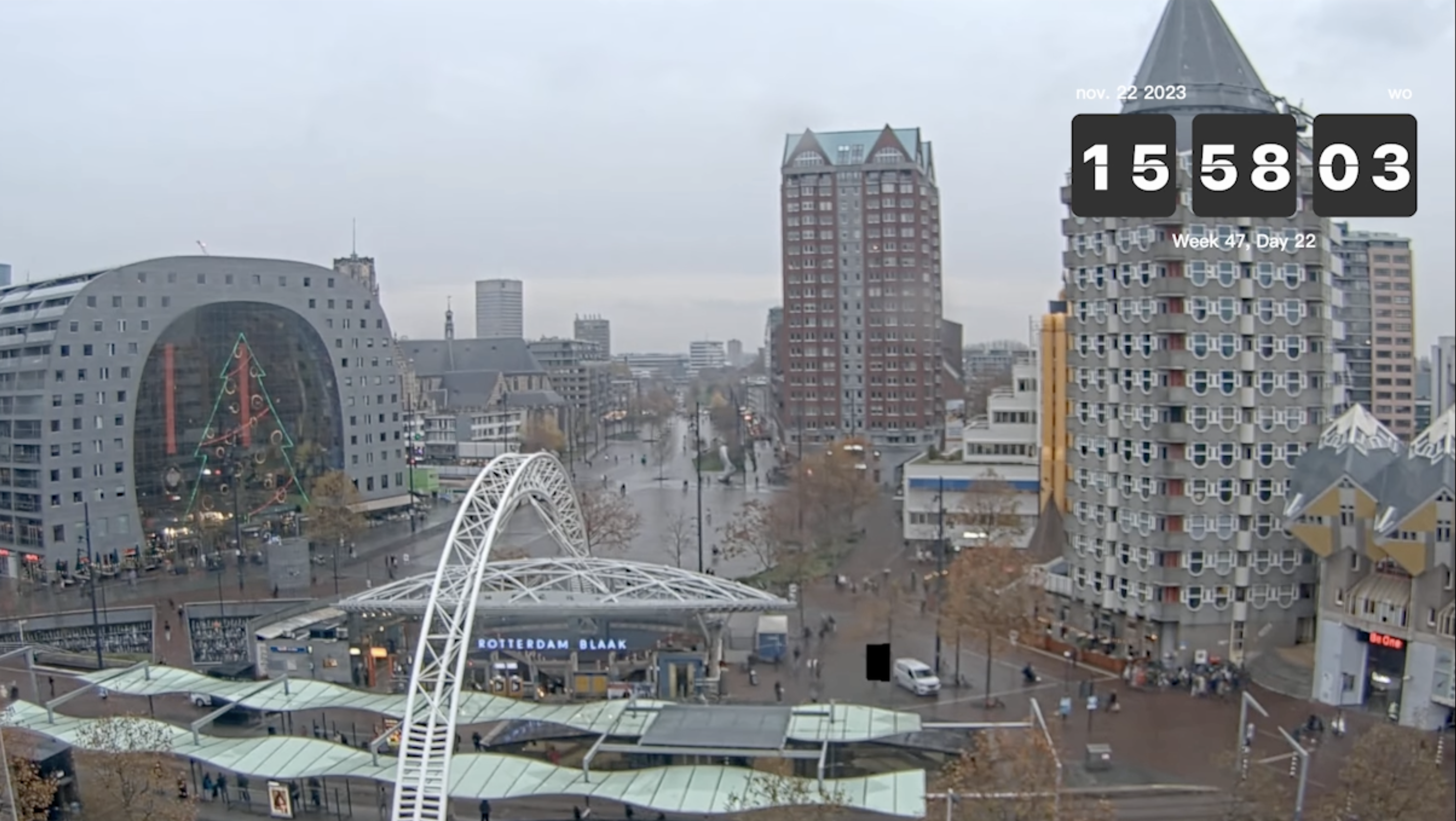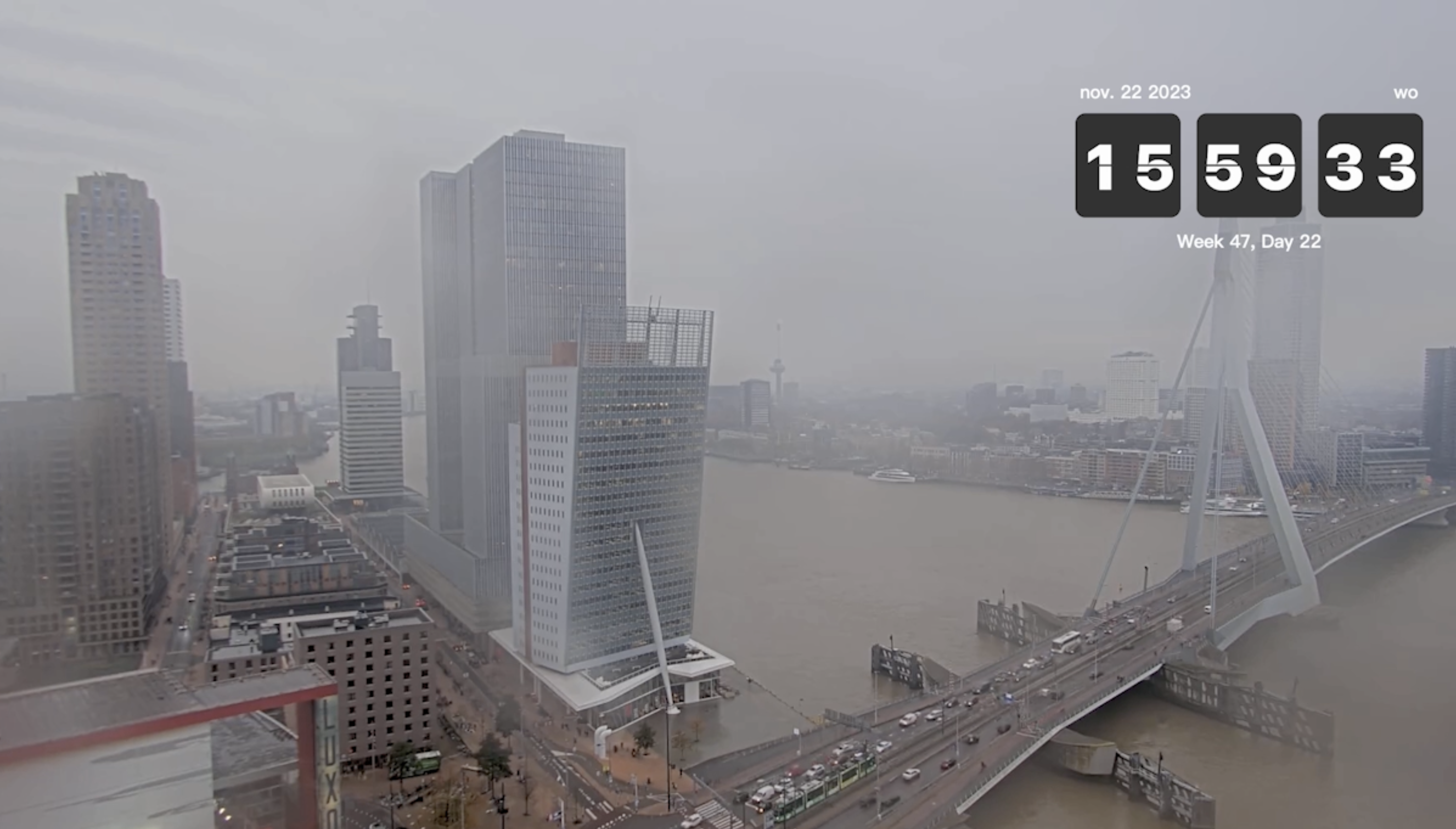Methods lens-based
The Reading, Writing, and Research Methodologies Seminar is tailored towards (further) developing research methods within the first year of this master. By establishing a solid foundation of research skills, it will eventually prepare students for their Graduate research in the second year. Through reading core theoretical texts, they will establish a common vocabulary and set of references to work from. They will learn the practice of classic ‘essayistic methodologies’, including close reading, annotation, description and notation, students learn to survey a body of literature, filter what is relevant to their research and create comparative pieces of analysis. The seminar helps students to establish methodical drafting processes for their texts, where they can develop ideas further and structure their use of notes and references. The course takes as axiomatic that the perceived division between ‘practice’ and ‘theory’ is essentially an illusion.
Curriculum: The seminar will involve:
(a.) Identifying the object of your research: description and analysis of your work
(b.) Contextualizing your work through description and reflection on contemporary and historical practices.
(c.) Identify research material key to your practice.
(d.) Synopsis and annotation of key texts
(e.) Writing machines: creating methods for group and individual writing.
Throughout, there will be an emphasis on working collectively, whether in a larger discussion group or in smaller reading and writing groups.
Editing Reading, Writing & Research Methodologies - handbook information
Outcomes of the seminar
There are THREE specific outcomes to the Reading, Writing and Research Seminar.
1) RAPID PROTOTYPE DIRECTORY: The first specific outcome of the seminar is the Rapid Prototype Directory. This is is built by everyone in the RW&RM class; it is a repository of 'hacks', 'scratches' and 'rapid prototypes'. RPD is a directory of directives which may or may not be executed; a directory of instructions which are used by the group to generate work and texts.
2) OUTLINE FOR A PROJECT THAT MAY OR MAY NOT BE MADE:The second specific outcome is an outline for a project that may or may not be made. This is a speculative document which prepares us for writing the Graduate Project Proposal in TRIM 4.
PROJECT THAT MAY OR MAY NOT GET MADE
3) TEXT ON PRACTICE: The third specific outcome for the RW&RM seminar of 2023-24 will be a 1500 word text which reflects on your own practice and situates your work in relation to a broader artistic and cultural context. The various texts produced within the RW&RM seminar in TRIM 1 and TRIM 2 will serve as source material for your text on practice. In common with all modules on the course RW&RM serves to support your self-directed research. The text on practice will provide the basis for your Graduate Project Proposal that you will produce in TRIM 4.
Text on Practice outline 2019-2020
Session one 13 Sept
Session One
TODAY' S OUTCOME: descriptions of work
11:00am -12pm
Intro Natasha Soobramanien and Steve Rushton in the large project space:
General intro to the methods sessions how they fit into the two year programme and outline of the day.
TODAY'S PAD https://pad.xpub.nl/p/MethodsLB23_24Sesh1
Outline of today's session.
12:00-13:00
Describe three of your works/ projects
For each work describe
What (200 words max)
How (200 words max)
Why (200 words max)
600 word description of three works = 1800 words (max)
13:00
LUNCH
14:00 Meet as a group
For groups of three
Read each other's texts
Readers: give feedback (what were you given to understand by the text? how can it be improved to make it clearer?).
Spend no more than 10 MINUTES giving feedback on each text
Writer: REMAIN SILENT, do not try to defend the text, concentrate on what the text is actually communicating to your readers.
writer: Make notes of your reader's comments
14:30 Make changes to your draft. (Keep original version below edited version)
UPLOAD ON TO THIS PAD
https://pad.xpub.nl/p/MethodsLB23_24Sesh1
15:00
Choose another piece of work and repeat exercise
What (200 words max)
How (200 words max)
Why (200 words max)
15:30
Meet in groups of three
Read each other's texts
Readers: give feedback (what were you given to understand by the text? how can it be improved to make it clearer?).
Spend no more than 10 MINUTES giving feedback on each text
Writer: REMAIN SILENT, do not try to defend the text, concentrate on what the text is actually communicating to your readers.
16:00 Make changes to your draft. (Keep original version below edited version) UPLOAD ON THE PAD
16:30 Round up and discuss
Session Two
LB1 11:00 - 17:00 Reading, Writing and Research Methodologies with Steve Rushton Session Two: Reviewing self-directed research
OUTCOMES:
1) Making a wiki page
2) Interview
3) Edits to current and previous texts
TODAY'S AGENDA
11:00-11:30 Organising our methods wiki pages. Putting the text we made in the first session on the wiki. Organising METHODS - THEMATIC PROJECTS and SELF-DIRECTED RESEARCH sections
Here is an example:
11:30 today's workshop
Interviewing each other: a interviews b; b interviews a
11:30 work on this pad: https://pad.xpub.nl/p/LBLensBasedSeshTwo22
Interview about your self-directed research. (Your current work).
Stage 1
30 mins:
a interviews b
a asks:
What are you making?
Why are you making it?
How does it relate to other things you have done?
How is it different to other things you have done?
What are the most significant choices have you made recently?
Throughout this exchange a takes notes on the pad
Stage 2
30 mins:
b interviews a What are you making?
Why are you making it?
Does to relate to other things you have done?
How is it different to other things you have done?
What are the most significant choices have you made recently?
Throughout this exchange b takes notes on the pad or makes a 'speech to text' recording of the exchange.
Stage 3
60 mins
A HANDS THE TEXT OVER TO B and B EDITS THE TEXT A HAS STARTED; elaborating on the points they have made in the interview
13:00 LUNCH
14:00 - 15:45
Stage 4: Edit texts
15:45 review progress as a group
Review work done so far.
16:00
Upload text on to your wiki page (if not already done so).
Add images and links to videos (if not already done so.)
Consider getting rid of what, how why headings from first session (the text will still retain its structure without these guide-rails.)
Previous steps: Wiki page. Make space for all aspects of the course: methods; reading and writing; thematic projects; notes; toolbox sessions; bibliography and notes on texts &c. For example: CrashTestStudent
Session Three
LB1 11:00 - 17:00 Reading, Writing and Research Methodologies with Steve Rushton
Outcome: Rapid Prototype Directory
References:
Scratch Orchestra's Nature Study Notes (1969) http://intuitivemusic.dk/iima/sonsn.pdf
John Cage's Song Books Vol 1 (1970) https://monoskop.org/images/0/03/Cage_John_Song_Books_Volume_1.pdf
Brian Eno: Oblique Strategies (card game)
https://monoskop.org/images/8/8c/Eno_Brian_Schmidt_Peter_Oblique_Strategies.pdf
"Do it" project, Curated by Hans Ulrich Obrist: https://curatorsintl.org/exhibitions/18072-do-it-2013
Pad: https://pad.xpub.nl/p/LensBasedScratchNov2
Order of play
We start at 11:00. Please be prompt.
11:00 AM
1) Look at Nature Study Notes (1969) by Scratch Orchestra (ed.Cornelius Cardew) read out some of the instructions. Look at other examples. Talk about restraints as agents for making work (Dogma, Sol LeWitt &c).
2) Write your own notations (instructions) Compile Rapid Prototype Directory.
Rapid Prototype Directory
Invent, perform, make work from Rapid Prototype Directory.
Over the day, we will use the directory as an 'engine' to produce images, sound pieces and short video pieces.
a) make work from your own rapid prototypes
b) make work from another group (so, we end up with different versions of the same piece = cover version).
12:00-13:00 write rapid prototypes, add them to the directory and make work from your own scratches.
Take no more than 10 mins to write and produce work from rapid prototype directive; move on to next rapid prototype.
13:00- 13:10 meet to review progress and plan the afternoon
13:10 LUNCH
14:10 continue to write rapid prototypes, add to directory and make work from your own scratches; make work from other scratches (cover versions).
16:00 Gather together to review the pieces we have produced.
Discuss how to archive today's work.
RAPID PROTOTYPE DIRECTORY
1. Empty your pockets. Take a photo.
3. find a way to hide your face
4. four people draw a line on the paper; connect the drawings in a single line; document the process
5. Record the last note on your phone
6. Record the most recent text message
7. Take a photo or screen shot of your first youtube recommendation.
8. Take a photo of the warmest object around you
9. create the most movement in a still image
10. individuals in the groups arrange their feet together and one person takes a photo of them
11. Create a sculpture with the contents of your bag and take a photo
12. Go to your nearer corner, stay there, look at it for a while, and then try to draw it.
13. Take picture of the phone lock screen of the person on your left
14. Link every person in the room to a word, write the word down and make a mugshot.
15. Design a tattoo for every person in the room, make them draw it on themselves and make a picture.
16. Take a selfie without your face in it.
17. Open your phone camera, close your eyes, spin in your chair (be careful) and take a photo
18. enter this classroom ‘backwards’ and film this.
19. make a picture of something you want to throw away/get rid of
20. Look around you. Think about a color that translates the way you are feeling atm.
21. fake a still portrait but with video
22. take a picture of other people’s laptops and document them
23. Have a conversation with an inanimate object while another photographs you
24. Go to the corner of the room and look at it for 10 sec, close you eyes and turn rapidly - take a photo of the first thing you see
25. everybody needs to screenshot one letter on their phone, the whole class needs to form a word together with all these letters.
26. Take a picture of something that tells time
27. interlock fingers in as many ways possible and take a picture
28. Film someone saying sounds made up of vowels and consonants until they say a word.
29. everyone makes one single note (individual) - add them together to flow - and record
30. Take everyone's portrait of their noses.
31. Think about a word that you don't like. Write it down.
32. write your name with cameramovement
33. Draw on a piece of paper the directions you took from your home to where you are now (from memory).
35. Find nothing. Take a photo.
36. make a gesture with your hand and take a photo
37. make a video of the noisiest object around you
38. sort every object in this room in color and make a picture.
39. Look outside a window, look at a river, if you have none, look at the sky. Feel the flow of the water or the air. Flowing, walk back backward.
40. Take a picture of the heaviest thing you can find around.
41a. wrap yourself in toilet paper and make a picture.
41b. dress yourself for your prom photos
42 Figure out the answer to everything, and take a photo
44. Take a picture of your underwear secretly
45. Take a photo of something that represents a map46. Take an image of somebody in the air
46. you can't touch the floor, take a photo
47. write the first letter of your name through the shape of your body
48. place every object in this room upside down and make a picture
49. Photograph something invisible.
50. Take a picture of something transparent.
51. pose as if you are eating your favorite dish
52. send a text saying “I love you❤️” and document it.
53. Look for tension and take a picture of that.
54. screenshot of your favorite image in your phone
55. screenshot of your background
56. Photograph only colour - no object should be recognisable
57. screenshot of your most recent photo
58. ask one person to take a picture of the back of your head
59. Think of your passport photo - get someone to take a portrait of you and do the opposite
60. take a picture of you working behind laptop or notebook
61. Recreate a landscape photo with your body/face
62. recreate a childhood photo
62. play rock paper scissors, take photo of the different outcomes
63. Describe another one by some other object in picture
64. Have one person film two others, who may only communicate using their fingers.
New entries here (Rapid Prototype Solo - week 2)
65. Create a photo montage of different textures within your current environment
66. Study of pace: video something slow, normal, and fast.
70. Make images about a case like murder/missing.
71. Take a photo of your face in the classroom
72. Take a lap around the building floor. Take a photo if you feel inspired
73. Open the Max patch and take photos of all the outcomes for 10 minutes straight.
74. Talking vaguely about explosions.
100. write down as many questions about ‘time’
103. link the previous words to images and put all these images together.
76. Make a collage landscape with images you find an reprint it.
78. Copy something which has already been copied
81. Capture the most season in one frame
82. Write about a (happy) memory from my childhood.
85. Pick a few outcomes from the Max patch and let AI create an image from the text prompt.
86. Write down some places those a guy usually visit.
87. Write about pace: one in 1 minute, one in 5 minutes, one in 15 minutes
88. Collect/take pictures of playgrounds (slides, swings,...)
91. Perform a pace: slow down a video and mimic it
93. Write questions related to my research.
94. What does forgetting sound like?
95. Make a scan of analog picture with iphone print and hang it
Media:ANALOG_PRoto_photo_iphone_scan_sjo.jpeg.ogg
RPD Pad: https://pad.xpub.nl/p/Rapid_Prototype_Directory_LB1 Back to methods page:
Methods lens-based#Session Three
Session
LB1 11:00 - 17:30 Methods in the large project space
References:
Scratch Orchestra's Nature Study Notes (1969) http://intuitivemusic.dk/iima/sonsn.pdf
John Cage's collection of notations: https://monoskop.org/images/9/92/Cage_John_Notations.pdf
Pad: https://pad.xpub.nl/p/LensBasedScratchNov2
Eno: Oblique Strategies (card game)
https://monoskop.org/images/8/8c/Eno_Brian_Schmidt_Peter_Oblique_Strategies.pdf
"Do it" project, Curated by Hans Ulrich Obrist: https://curatorsintl.org/exhibitions/18072-do-it-2013
Rapid Prototypes: solo + a project that may or may not be made (part one)
Last time we worked on the Rapid Prototype Directory
https://pzwiki.wdka.nl/mediadesign/Rapid_Prototype_Directory_LB1
and you produced rapid works in groups.
The outcome of this session will be three works - "individual rapid prototypes".
The procedure is similar to last time.
Write a protocol (restraint) add it to the directory (give it a number as you did last session) make work and upload Link to the RPD page
Quick piece one = 30 mins (upload at 12:00)
Quick piece two = 1hr (upload at 13:00)
13:00 Lunch
Quick piece three = 1 hour (upload at 15:00)
Quick piece four = 1 hour (upload at 16:00)
16:00 Review Directory
Note: Write a protocol that "leans toward' your own research, this may be a personal project (aka self-directed research) or it may be related to a thematic project you are working on. It may be something you have been meaning to try, but never found the time.
While you are working on the above, Steve will take time to chat to you individually about your work, and how you want to use writing during your time at the Piet Zwart and the discuss the sort of reading and writing you enjoy.
Session
LB1 Methods with Steve, in the large space
A Future Project That MAY or MAY NOT be made.
11:00 Steve gives intro to today's session
11:30 Outline a project you would like to make.
What will it be? (Three sentences max)
Why do you want to make it? (Three sentences max)
Describe how it would be made: describe the stages needed to make it (Four sentences max)
Upload here: PTMoMNBM
12:30 Give feedback on each other's outline in groups of 2
Note: please make the outline as practical as possible; please avoid specialist terms and theoretical terms.
12:50 Brief review as one group
LUNCH
14:00- 16:00
14:00 Make amendments to outline following review from your colleague and make edits.
14:30 make 2 rapid prototypes which respond to your proposal.
15:45 upload your 2 rapid prototypes here PTMoMNBM
16:00 discuss projects n one group.
16:30 finish
Note: Steve will be chatting to you individually
Sign up here:
https://pad.xpub.nl/p/SteveChatMethodsWEd22Nov
Proposals:
Tesse's proposal for a project that may or may not be made
Noura's proposal for a project that may or may not be made
Rodolfo's proposal for a project that may or may not be made
Yana's proposal for a project that may or may not be made
Aratrika's proposal for a project that may or may not be made
Chan's proposal for a project that may or may not be made
Luca's proposal for a project that may or may not be made
Jingfeng's proposal for a project that may or may not be made
Tessa's proposal for a project that may or may note be made
Do's proposal for a project that may or not be made
Riccardo's proposal for a project that may or may not be made
Tom's proposal for a project that may or may not be made
Bojan's proposal for a project that may or may not be made
Toto's proposal for a project that may or may not be made
Methods lens-based#Session Six
Note to LB1. Steve has transcluded your pages (above). This means that any changes that you make on your page (above) will also change on the entry below. This means you have an individual page and the content of that page is also reproduced here as a collection.
Tesse
Original:
This proposal is for a project that delves into nature’s instances of cyclical time, complicated by the (my) human reflex to make this linear or progressive (productive). It will most likely take the shape of a mid-length documentary, or otherwise a multi-channel installation.
I want to explore this to reconceptualise the experience of time and to see how our lives and minds are often structured according to a temporality that deviates from nature’s flux. It is an exercise for both the viewer and myself to allow things to come and go without feeling the need to hold on. To not feel like we are standing still when we aren’t actively going forward.
I will search for instances that visualise nature’s cyclical time, such as the leaves changing colour, the trees shedding, the waves coming and going, the moon changing phases. I will perform (and film) scenes that express the need to hold on to things, such as tying fallen leaves back to the trees, tracing the lines of the waves on the sand. These scenes will perhaps be combined with a more textual/vocal/anecdotal/theoretical exploration of time, such as scientific perspectives, biological expressions, or a clockmaker describing how watches work. These different elements will be presented either next to each other as a body of research, or will be combined on one screen in a form that allows the viewer to reflect on, but also feel how the time is passing.
Rodolfo's questions:
What do I mean with cyclical time? (although this becomes clearer after)
What would the multi-channel installation be made of/look like?
What do these performances look like?
Why the scientific perspectives? How relevant is that?
Last sentence is maybe more what than how
Revised version:
This proposal is for a project that delves into nature’s instances of time being cyclical, complicated by the (my) human reflex to make this time linear or progressive (productive). It will most likely take the shape of a mid-length documentary, or otherwise a multi-channel installation with the different scenes shown on separate screens.
I want to explore this to reconceptualise the experience of time and to see how our lives and minds are often structured according to a temporality that deviates from nature’s flux. It is an exercise for both the viewer and myself to allow things to come and go without feeling the need to hold on. To not feel like we are standing still when we aren’t actively going forward.
I will search for (and capture in image and sound) instances that visualise nature’s cyclical time, such as the leaves changing colour, the trees shedding, the waves coming and going, the moon changing phases. I will then perform (and film) scenes in those environments that express the need to hold on to things, such as tying fallen leaves back to the trees, tracing the lines of the waves on the sand. These scenes will perhaps be combined with a more textual/vocal/anecdotal/theoretical exploration of time, such as expressions of biological cycles, or a clockmaker describing how watches work. As a next step in the sound, these informational parts would be combined with atmospheric soundscapes (and perhaps even musique concrète) made from the sounds recorded in nature. The last step would be to decide whether these elements I have collected will be presented next to each other as a body of research, or whether I will edit them together on one screen in a form that allows the viewer to reflect on, but also feel how the time is passing.
Rapid prototypes related to this proposal:
1. Draw as many circles as you can on one paper without having the lines touch.
2. Make/find three videos of the same measured time but with a different experienced time.
Rodolfo
Original
Your Presence Was Cancelled is an ongoing project that I would like to show at the EYE Research Labs next February. The project consists of creating a moving image, based on a still photograph - a kind of selfie I took last May on the train - and drawing a narrative around it.
I want to make it because, first of all, I think it will help me understand and process what happened at that moment, or rather, that day. It also seems to me to be a good opportunity to work with archive material and create a narrative that is honest and, at the same time, exciting and surprising about it. Finally, it seems like a great opportunity to get out of my comfort zone (which mostly involves creating still images), and generate something new from an artistic/technical point of view, in which I work with moving images and sound.
There are, from the outset, three components of the project that I have to work on: the image, the text and the sound - the last two of which may, or may not, be linked to each other. In relation to the image, it seems important to me to start dismantling the photograph and create a notion of movement from it, through an editing process. I want it to be possible to browse/navigate through the image, as if it’s moving, like a train. With regards to the text, it seems important to me to understand what type of narrative I want to create and, above all, how I want to tell the story of this picture, whether I want it to be something merely descriptive, more personal or maybe both. And how do I want to communicate what I'm saying: whether through text or a voice over, which may or may not be mine. And this is strictly related to the issue of sound, because if there is a voice over, it seems important to me to understand whether I want to add other types of sound to the piece, be it music or sounds related to the space seen in the picture. It seems essential to me to bring together, throughout the entire process, all the components and understand how they work together, so that there is coherence between each and every part.
Tesse's questions
Your Presence Was Cancelled is an ongoing project that I would like to show at the EYE Research Labs next February. The project consists of creating a moving image, based on a still photograph - a kind of selfie I took last May on the train - and drawing a narrative around it. I want to make it because, first of all, I think it will help me understand and process what happened at that moment, or rather, that day. It also seems to me to be a good opportunity to work with archive material and create a narrative that is honest and, at the same time, exciting and surprising about it. Finally, it seems like a great opportunity to get out of my comfort zone (which mostly involves creating still images), and generate something new from an artistic/technical point of view, in which I work with moving images and sound. There are, from the outset, three components of the project that I have to work on: the image, the text and the sound - the last two of which may, or may not, be linked to each other. In relation to the image, it seems important to me to start dismantling the photograph and create a notion of movement from it, through an editing process. I want it to be possible to browse/navigate through the image, as if it’s moving, like a train. With regards to the text, it seems important to me to understand what type of narrative I want to create and, above all, how I want to tell the story of this picture, whether I want it to be something merely descriptive, more personal or maybe both. And how do I want to communicate what I'm saying: whether through text or a voice over, which may or may not be mine. And this is strictly related to the issue of sound, because if there is a voice over, it seems important to me to understand whether I want to add other types of sound to the piece, be it music or sounds related to the space seen in the picture. It seems essential to me to bring together, throughout the entire process, all the components and understand how they work together, so that there is coherence between each and every part.
Second Text
Your Presence Was Cancelled is an ongoing project that I would like to show at the EYE Research Labs next February. The project consists of creating a moving image, based on a still one - a selfie that I took last May on the train - and building a narrative around it.
I want to make it because, first of all, I think it will help me understand and process what happened at that moment, or rather, that day. I see it, as well, as a good chance to work with archive material and create a narrative around it. Finally, it seems like a great opportunity to get out of my comfort zone (which mostly involves creating still images), and generate something new from an artistic/technical point of view, in which I work with moving images and sound.
There are, from the outset, three components of the project that I have to work on: the image, the text and the sound - the last two of which may, or may not, be linked to each other. I have to start to dismantle the photograph and create a notion of movement from it, through zooming in/out and browse on the image. With regards to the text, I need to understand what type of narrative I want to create and, above all, how I want to tell the story of this picture, if I want it to be something merely descriptive, more personal or maybe both. And how do I want to communicate what I'm saying: whether through text or a voice over - which may or may not be mine. This choice is strictly related to the issue of sound, because if there is a voice over, I would need to realize if I want to add other types of sound to the piece, be it music or sounds related to the space seen in the picture. In order for the piece to have a harmonious and coherent appearance in the end, it seems essential to me to work, simultaneously, with each and every component of the project throughout the process.
Rapid prototypes
1. In the image you can see my reflection and, in another plane, the reflection of another person in the carriage. Simulate a dialogue with that person through improv.
2. Write down all the questions that I have about the picture and the project itself.
What’s in the picture? What does the picture mean for me? What can the picture mean for others? Is the picture a selfie? What's a selfie? What was I looking at? Why did I cover my face? Was I trying to pose for the picture? Was I looking at myself on my phone screen? Was I listening to music? If yes, to which one? Can I get this information? What other sounds were there on the train? Could I (still) hear them? Were people talking? Was the seat comfortable? What did I have inside of my backpack? Can I recreate it? What do I actually remember? What did I have in my lap? Why did I decide to take this photo? How was I feeling? What happened before? What happened after? Where was I going? From where was I coming from? Where was the train? Was the train moving or standing still? How’s the configuration of the space where I am? What’s that space? Is the space pleasing? What are the colors of this space? Does it even matter? Do I want to show the real colors of the picture? Is it important? Or is it just an aesthetic/visual choice? Is it possible to separate me from space? Can I talk about space without talking about me? Which are the limits of my understanding of space? Who else was in the space? Who is this person? Who is this woman? Is she a ghost? What is she doing? Where is she from? How old is she? Does she have kids? What does she do? Does she work? Is she unemployed? Is she retired? Is she on a holiday? Is she married? Is she single? Is she divorced? Is she a widow? What’s her biggest dream? How does she feel now? Where is she going? What does she see from her seat? Did she notice me? What does she think about me? Could I be her son? Could I be her grandson? What would we talk about? Would we talk in Spanish? Would we have interests in common? Would I like her? Would she like me? Is it possible for us to share space again (somewhere in the future)? If so, where, how and when? Would I tell her about this project? Will she know about this project? Would she like it? Will someone like it? Will I like it? Is this worth it? What is this about? Is it about me? Is it about my grandmother? Is it about loss? Is it about memories? Is this about void? Is it all and nothing at the same time? Do I have any clue? Will I - at some point? What am I actually doing?
Yana
I want to create a step-by-step tutorial on how to make your own bomb. It will be intertwined with other material/interviews of people talking about explosions in Rotterdam.
I will use the tutorial as part of the exploration of the bigger topic of explosions in Rotterdam. This tutorial will position my research in a larger framework which is not strictly documentary, but has elements of magical realism/fiction in it. A lot of the explosions in Rotterdam are also done through using illegal fireworks, so I think this has a DIY element to it which suits the format of a tutorial. The idea of a tutorial for a bomb came from a book I sincerely love, called Still Life with Woodpecker, telling the love story between an outlaw who bombs corporations and an ecologist princess. Through bombs, pyramids, aliens, and other peculiar subjects, the book rediscovers all these as a means to accessing the Mystery. And perhaps, this is what draws me back to this text, as in my work, no matter the subject, I want to access the mystery or the strange and peculiar in some form or another.
To make this tutorial, I would start by finding a recipe - there are a few in Still Life with Woodpeckker which were taken from The Anarchist Cookbook. Then, I would need to decide on the aesthetic to film in - should it be a hand drawn animation or a Wes Anderson symmetry obsession? I would then need to get materials, possibly substitutes to the real ones. And finally - film the tutorial.
Aratrika
What will it be?
A film montage of visuals of me filmed by myself using different instagram filters. In these clips I am alone, doing everyday things, often looking into the camera. There is overlaying audio that creates a coherence and narrative.
Why do you want to make it?
I am interested in the ways we choose to depict ourselves, the joys of choosing and building our identities. I have been exploring self portraiture in this way for a while now and want to put the different clips together and see what I discover.
Describe how it would be made:
-Look through archives from 2019-now and download relevant and interesting clips
-Put them into a video editing timeline
-Play around with them in terms of order, duration, colour
-Make note of what kind of themes or narratives emerge, feel free to experiment with various iterations
-If it feels right work on a voice over or sound design to tie everything together
Extra steps:
-Imagine how it might play out as a video installation
-Play around with TouchDesigner
Rapid Prototype:
1. go to the studio
2. print out a picture
3. stretch your upper body
4. take a photo of your reflection
5. put it side by side with a still from an old self-video clip, on the computer or printed
6. write for 5 mins about how that feels
7. say "good job aratrika"
Chen
What will it be?
Making a Card Board game
- Five everyday electronic devices. ( phone, laptop, tablet, headset, smart watch etc,,)
- A card with five multi-outlet plugs.
- A mix of multiple chargers and cables.
The challenge is to see who can successfully charge all the devices first. The participant who accomplishes this task first will be declared the winner.
(+)
To create a more immersive gaming experience, it's important to draw inspiration from real-life situations, such as dealing with water damage or faulty cables.
These scenarios can add depth and challenge to the game, making it more engaging for players. Additionally, incorporating physical objects into gameplay, such as game counters or actual devices, can further enhance the connection between the virtual world and real-life experiences.
This approach not only adds interactivity but also bridges the gap between the gaming world and our everyday lives.
Why do you want to make it?
Creating a board game reminds us of daily life, as life itself can often feel like a battlefield. I have also experienced the frustration of not having my charger or struggling to find an outlet in certain situations. It makes me wonder about conducting a small psychological experiment to measure the level of dependence that humans have on their devices.
(+)
It is a proposal to take a moment to consider the profound influences on our lives at present. Everything tends to be interconnected and intertwined.
I would like to take a step towards visualizing our psychological states through the use of simple gestures and playful activities.
Luca
What will it be.
A audio visual manifesto that stands for a world where friendship is appreciated as a form of romance. This piece will feature two friends Tam and Bodien. They will talk about their friendship, their views on the status of friendships vs romantic relationships and fantasize how society would function and look like when friendship is appreciated as a form of romance. For the audio you will hear a voice-over of their conversation about these topics. The visual part will be images of them interacting with each other and doing
Notes: Is it possible to do it in another way, to see romantic relationships as some deep friendships, if we see friendship as a general strong connection? Maybe we can also discuss about the difference of them, to define friendship and romance.
In this work, the statement of voice-over must be important.
Why do you want to make it?
Starting a movement that fights for all forms of relationships. Showing the beauty and importance of intimacy between friends. To start the conversation on why we often put a romantic relationship above a friendship and what the border is between the two.
Notes: Yes the border is the definition we should discuss about.
Describe how it would be made.
The steps I will take to make this project will be doing research on relationship anarchy. Reading articles and have a conversation with Tam Duwel who implements this in their live. Film a day with Tam and their friend Bodien, to document their friendship. From the conversation with Tam I will choose some activities they can do so the camera can observe their interaction and connection. So it's more documentary style. Record audio of their conversation to use as the voice-over. Edit for 3-5 weeks. Maybe if necessary rerecord the audio and write a script before hand.
Notes: In my opinion if the video work could be more documented, it would be stronger for me, as a solid proof of a new form of relationship. If I felt about the fiction from the work, it might weaken the power.
Jingfeng
What will it be?
Rotterdam Syndrome A collective of photos, all about Rotterdam and its suburban places. Using my past and new experience on photography to describe the feeling of living here. Not sure about any specific topic, or just general description. Why do you want to make it?
Why do you want to make it?
Photography is the most familiar media for me, I can use it to make some images about the object places. I may have some personal perspective about this place, there can be some chances to create new images.
How it would be made:
Stages:
1.To get familiar with this city, hang around, look for interesting landscapes. (Every spare days)
2.Find out if there is any certain topics, then decide whether to separate them into different projects.
3.Maybe I can try some new methods like analog, large format.
4.To see if I can edit the photos into an album. (Photobook design, editing)
Notes:
You can describe the style of the photo's you want to make. you can explain your personal motive on why you what to photograph Rotterdam. what is the feeling behind it? Wha do you want to get out of it or achieve with it? Do you want the viewer to get something specific out of it? How will you go about making the photobook? Mention more detailed stages.
Amendments
What will it be?
Rotterdam Syndrome
A collective of photos, all about Rotterdam and its suburban places. Using my past and new experience on photography to describe the feeling of living here. The style of shooting is not decided yet, I prefer to find it out during the process. Not sure about any specific topic, or just general description.
Why do you want to make it?
I may have some personal perspective about this place, because I don’t have much experience living abroad, Rotterdam is the first foreign city I will live for a long time, I want to find some connection between it and myself, through my eyes and paces. Then maybe I can know myself and the city better, and the most important part, similar with my previous works, is to look at the gap of modernity here, and to express my perception about it through images.
How it would be made:
Stages:
1.To get familiar with this city, hang around, look for interesting landscapes and communities. (Every spare days)
2.Find out if there is any certain topics I interested in, then decide whether to separate them into different projects.
3.Maybe I can try some new methods like analog, large format during the process.
4.See if I can edit the photos into an album, but the outcome depends on the process of shooting. (Photobook design, editing)
Questions:
What is the connection between me and the world? Why do I interested in realistic landscapes, like old streets, buildings, villages? Why do I always relate with my parents? Do I have more sense on painful experience? What is my voice on Chinese politics? I have experienced a lot of discussions but now seems have nothing to say. Am I a tourist in Europe? What makes a person "tourist"? Is there deeper theory related to my work method? (Like "At the Edges of Sleep") What is the difference between me and other Asian creators? Can I invent some new visual methodologies? Or some combinations with sound? What does it mean to me to move to another country? What does it mean to stay home?
In my new work, I want to explore if there is a way to visualize my feeling about leaving home and living in Europe.
What is home? We often talk about “leaving home”, seems it’s a new chapter of life, or a very big change. But what does it mean to be “staying home”? Home is somewhere we eat, pee, sleep everyday, that means we are very familiar with it, and having a sense of secure in it. But what’s more? Is home the meals, smell of pillows, or the scratches on walls? If so, can we repeat or recall them by some means? Or, can we build a new home through them? Then, a new home can be signals from relatives, or just their projections by sounds, objectives, shadows, etc. Then home is not some certain room, it can be transferred into some connections between the whole family.
Dream is also a way for people to connect with their important ones, at least from a single direction. There is also a connection between dream and cinema: you dive into a dark space to watch some images. It’s a interesting aspect on sleep and dream, refers to At the Edges of Sleep.
The living experience in a new place means you need to do many new things, like living totally alone, cooking everyday, building your own circle, finding a job in restaurant. There are things to explore/visualize during the process, although I have not figured them out. And specifically there may be some objectives and stories to document with.
For my EYE project, I’m trying to combine modern real life with my abstract figure through some concrete phone call scene and dreamlike walking ghosts on the streets. There will be dialogue or monologue, with some daily talking through the phone. But I don’t want them to be real daily, I hope there will be metaphors hid behind. As an outcome, the short film will not become a narrativized story, but a little bit abstract with some atmosphere.
Tessa
Wednesday, November.22
A project that may or may not be made
What will it be?
an installation based on the video I’ve been working on for the EYE: in the video there are six iterations of an object (paper, cloth) falling down the stairs (cgi). each iteration lasts for about 30 seconds. the camera follows this falling object into a white void - after which the camera pulls back to reveal that the ‘void’ is a screen in another ‘void’. the camera turns to the right where we see the same setting where we started (the room with the staircase). the camera moves forward to go back to its start position and the next iteration begins.
Why do you want to make it?
- my work consists of installations where a spectator would move through, this physical aspect being essential in the relation to the cgi based videos - a question that keeps coming back throughout working on the EYE project: how to translate this notion to the cinema context? (single screen, and the body remaining seated - not alone)
- to propose the opposite question that’s relevant to the project that may or may not be made: how to translate the cinematic context back to the spatial context? (multiple screens, the body free to move around in the space - and in more solitude).
- has the concept of the video changed since it has gone through multiple stages of translation?
- is there a preferred version?
- how will each alteration influence the physical space of the installation? (for example: in one iteration a plant is added to the scene, will the plant be present in the physical space?)
Describe the stages needed to make it
STAGE ONE
make video. observe video. observe video in screening, make notes.
STAGE TWO
depends on the notes made in first stage.
Do
What will it be?
‘Trapped in a Slide’ will be a poetic film where I show people freezing in time while they look at a lost memory through a dia viewer.
edit: Also describe intent of the work.
Why do you want to make it?
I myself, being in my mid-twenties, feel a constant restlessness. And this constant restlessness has a lot to do with time. We’re living our days, weeks and years without a notion of time. Things start to feel as ‘granted’.
When I found all these dia’s in certain ‘second hand’ shops I was amazed but also confused, amazed because I loved it, and even though there were way too many, I wanted to look at every single one of them. And while looking at them the conusing came up; ‘’why are all these pictures of all these people here in this shop?’’ They were also super various, there were images of people just being oneselves in daily life. Sitting on a couch, drinking tea, cooking, some were dancing in their living room. But also there were images of people having their holiday or being on a trip or something. But the ‘event’ that was happening did not affect my amazement that much. The feeling that I really ‘knew’ these people, or actually felt like I’ve been there was what amazed me. I couldn’t stop staring at these images, and this made me dwell in time for the first time in a very long time. And this dwelling in time, I want other people to experience too, so that’s why I want to make this film where people freeze in time while they look at a ‘lost’ memory through a dia viewer.
edit: Explain the way in which a photo preserves a moment (freezing time) and the way in which nostalgia might play a role. There seems to also be a sort of voyeuristic notion here - why do we care so much about the memories of other people? Why do we also become curiously paralysed when accessing these 'private' moments of strangers lives?
Describe how it would be made: describe the stages needed to make it
First of all I need to collect dia slides that inspire me and that are interesting to recreate cinematically. As follows I’ll have to find suitable locations and actors. Because I want to not only ‘recreate’ the image but also the feeling that ‘looking at a dia through this viewer’ gives, I’ll have to really think about positioning my characters + lights in combination with my camera movement. I’ll move through the image as some kind of ghost that ‘investigates’ the frozen moment.
After I record my scenes, I’ll have to look in the edit if I need more or different shots. Because there’s no ‘logical’ narration this might happen. This means I’ll have to start early and make sure there will be enough time to shoot extra footage.
In the postproduction I’ll look for sounds/music that will enhance my images.
As follows I’ll edit my film in a way that the narration fits my message. If needed I’ll also use voice-over to support.
edit: I like the mention of moving like a ghost through the work. You could explain how you use creative choices to help the audience navigate this concept of 'frozen time'. That it is almost a cycle of voyeurism we are experiencing here - a frame within a frame, within a frame, within a frame..... NICE
____________________________
Edited version with Tom's notes.
What will it be?
‘Trapped in a Slide’ will be a poetic film where I show people freezing in time while they look at a lost memory through a dia viewer. By showing a series where the camera floats almost hypnotising through these voyeuristic happenings I want to create a perception of time.
Why do you want to make it?
I myself, being in my mid-twenties, feel a constant restlessness. And this constant restlessness has a lot to do with time. We’re living our days, weeks and years without a notion of time. Things start to feel as ‘granted’.
When I found all these dia’s in certain ‘second hand’ shops I was amazed but also confused, amazed because I loved it, and even though there were way too many, I wanted to look at every single one of them. And while looking at them the conusing came up; ‘’why are all these pictures of all these people here in this shop?’’ They were also super various, there were images of people just being oneselves in daily life. Sitting on a couch, drinking tea, cooking, some were dancing in their living room. But also there were images of people having their holiday or being on a trip or something. But the ‘event’ that was happening did not affect my amazement that much. The feeling that I really ‘knew’ these people, or actually felt like I’ve been there was what amazed me. I couldn’t stop staring at these images, and this made me dwell in time for the first time in a very long time. This sense of amazement is almost a voyeuristic notion, because why do we care so much about the memories of other people? Why do we also become curiously paralysed when accessing these 'private' moments of strangers lives? This dwelling in time, I want other people to experience too, so that’s why I want to make this film where people freeze in time while they look at a ‘lost’ memory through a dia viewer.
Describe how it would be made: describe the stages needed to make it
First of all I need to collect dia slides that inspire me and that are interesting to recreate cinematically. As follows I’ll have to find suitable locations and actors. Because I want to not only ‘recreate’ the image but also the feeling that ‘looking at a dia through this viewer’ gives, I’ll have to really think about positioning my characters + lights in combination with my camera movement. I’ll move through the image as some kind of ghost that ‘investigates’ the frozen moment.
After I record my scenes, I’ll have to look in the edit if I need more or different shots. Because there’s no ‘logical’ narration this might happen. This means I’ll have to start early and make sure there will be enough time to shoot extra footage.
In the postproduction I’ll look for sounds/music that will enhance my images.
As follows I’ll edit my film in a way that the narration fits my message. If needed I’ll also use voice-over to support.
edit: I like the mention of moving like a ghost through the work. You could explain how you use creative choices to help the audience navigate this concept of 'frozen time'. That it is almost a cycle of voyeurism we are experiencing here - a frame within a frame, within a frame, within a frame..... NICE
Rapid prototypes:
1) go for a walk and find something that makes you dwell in time and make a picture.
2) go for a walk and make a picture of something that gives you a voyeuristic feeling.
Riccardo
What it will be.
‘My Heart Leaps Up When I Behold The Rainbow’* is a short animation film about the process of becoming a bird. To create a space of attentive listening the movie set a meditative tone, addressing the audience in the steps to follow, and culminates in a visual interpretation of the achievement.
Why do you want to make it.
Birds, whose colour shades have been subjected to extensive taxonomic classification systems, host these archival attempts on their feathers. Becoming a bird, instead of studying a bird, we have a body which differs in the way it relates with and perceive the surrounding, compared to our human one. The artist reflects on the need of developing new ways of sensing, other than naming, to be receptive toward phenomenas otherwise hidden to our awareness.
Tom
Rhythms in Rotterdam
What: An immersive installation and environmental study of the city of Rotterdam. The work is composed by a series of video portraits (moving photographs) arranged around a room, exploring the intersection of photography, motion and personal exploration. The experience is also further enhanced by sound and lighting, aiming to offer audiences a multi-sensory experience of Rotterdam’s environment.
Why:
Having recently moved to Rotterdam, the creation of this work would allow me a process to become intimate with my newfound home. It represents a personal and intentional act to more deeply engage with the city, capturing its spirit and unraveling its stories.
How:
The work will be be filmed over an extended period of time and evolve organically as I explore the environment and collate footage. I will travel across the city with my camera to a variety of environments, not only documenting physical spaces but also the people who inhabit them. The intention is to creative a visual narrative which reflects my personal exploration, as well as a snapshot of Rotterdam’s dynamic energy.
Notes BY DO
I think it's a really interesting idea to capture your own journey of becoming a 'ROTTERDAMMER' while you're also discovering the city. The form of 'how' this film will look and feel isn't very clear for me yet, but I don't know if that's your intention, or if you simply don't know it yet. In the 'what' it feels like a photo series but in the how it feels more like a documentary maybe it's cool to combine? :D.
Documentary I say because you're talking about the people who inhabit with the physical spaces, not that that necessarily needs to be a documentary, but in feels a bit like it is going to be.
soooooo yeaaahhhhhh i like it a lot bruhhh but I wanna know MORE <3__<3
Edited -
The final format of the work will be similar to a photo series, but using video. Screens will be set up in 'frames', and the shots will be composed akin to photographs, but will also include movement. The style could be seen as a documentary, as I will be trying to capture impressions of life as I travel around the city.
Rapid Prototypes -
Go to an environment in Rotterdam you haven’t been before and take a video. File:Environment .mp4
In this same environment, find a person, take a video portrait of them. File:Worker.mp4
Bojan
The final product of the project will be a photo book containing photos of hairbands that I found on the way between my apartment and faculty. The photos will be arranged as a typology of found object. On some pages there will be single item, on others there will be in groups. Each object will be assigned the characteristics of a fictitious character that owned the single hairband. The texts will be excerpts from world literature heritage.
My fascination with found objects dates to the COVID era, when on my long walks by the Adriatic Sea I came across objects that had been thrown, washed up by the sea. At the same time, I started asking myself very simple questions such as to whom these things belonged, were they thrown away or maybe they were just accidentally lost. Maybe they belong to those unfortunates who tried to cross the Mediterranean in small boats in a hope of better life, or maybe they belonged to yachts owners that sail between islands with vehement ease? Are these people still alive at all?
First I plan to collect about 200-300 hairbands. Then I will systematically photograph them as objects for the archive. Finally, I will combine them in a photo book with texts. The book will be hand bounded by myself.
Toto
Simple idea: What: 24 film portraits in Rotterdam made in 24 hours by 24 film crews, people selected from 24 neighborhoods in Rotterdam randomly selected by an algorythm. Why: I think it is fascinating to follow a normal day in Rotterdam on things that are happening in the same time with a multitude of people. I think it is interesting to frame a Zeitgeist, a time piece with the link of a certain time and place. How: I need 24 film crews consisting of a dir, sound recordist and cameraman/woman, that have 24 hours to prepare the 24 portraits made together with a sound recordist and a cameraman/woman. every portrait will get 5k euros for pre and post-production in total a 120.000 euro budget. The final result will be a installation with a combined film of all the portraits of 24 hours edited to a long 24 our version and a short 1 hour version. Feedback Bojan: its expensive atleast.
Feedback retake’s Toto Option B What: A film of real life stories made within 24 hours in Rotterdam made out of social media content. the final film should be 24 hours long. Why: I think it is an interesting experiment to see what you will find when you gather all the archive footage, stories, created in one day in one place. How: Gather as much as possible social media footage, stories, from Rotterdam or another place and store them chronologically.
Social media compilation out of one day, Stories. in Rotterdam. Option C What: Have a portrait on 24 hours but consisting of multiple dates but put a certain time more central. 6:00 baker, who makes bread. comment: 7:00 follow taxi driver
8:00 school teacher
9:00 ..
Session
Writing workshop with Natasha
Outcome: draft text exploring a question that motivates your work
Session
LB1 11:00 - 17:00: Methods, with Steve, in the large project space
11:00 Intro by Steve will give outline of today's workshop
Today we will go back to The Project That May or May Not be Made and Rapid Prototypes, which we did in the first trimester. It will be interesting to see how we approach this exercise now that we have two trimesters of work and writing under our belts. We will repeat the same four phases.
1) write project that may or may not...(see outline below)
2) make rapid prototype relating to the project that may...
3) 15:30 read and give feedback in editorial groups of 3
4) 16:15 edit and upload on to wiki
Rodolfo's proposal for a project that may or may not be made (2)
https://pzwiki.wdka.nl/mediadesign/METHODS_8TH_MAY_2024_DOWESTPHAL
Jingfeng proposal for a project that may or may not be made 8 May 2024
https://pzwiki.wdka.nl/mediadesign/Session_seven
Yana's second proposal for a ptmomnbm
Noura's proposal for a project that may or may not be made (2)
https://pzwiki.wdka.nl/mediadesign/Nihal_rapid_prototype_8_may
5) 16:30 Meet as large group
What is it?
Why make it?
Workflow
Timetable
Rapid Prototypes
Previous practice (feel free to use material from your text on practice)
Relation to a wider context
Preparation:
Review assessment feedback from tutors. Review your Text on Practice
Previously...
https://pzwiki.wdka.nl/mediadesign/PTMoMNBM
In this workshop we will explore how writing can help to support making, using the writing process as a tool to think through motivating questions in our work. You can use this session to reflect on recent developments in your process/practice, in particular your work in Session 5 (Projects That May Or May Not Be Made). This should also be useful preparation for the Text on Practice sessions I will be facilitating next semester.
During this workshop I will guide you through the following activities:
Close reading and group discussion of a critical-creative text
Free writing exercise
Writing, redrafting and reviewing session
Detailed plan for the day and text for discussion to be confirmed ahead of the workshop.


